Pulished on Mar. 19, 2022
Ceramic mugs are a common household item that is used to hold hot or cold beverages. Porcelain is a type of ceramic that is commonly used to make mugs due to its durability, insulation, and aesthetic appeal. In this article, we will discuss the raw materials used to make porcelain mugs, the steps involved in the production process, the different glazing and painting techniques used, the role of mugs in daily use, and how to choose a high-quality porcelain mug.
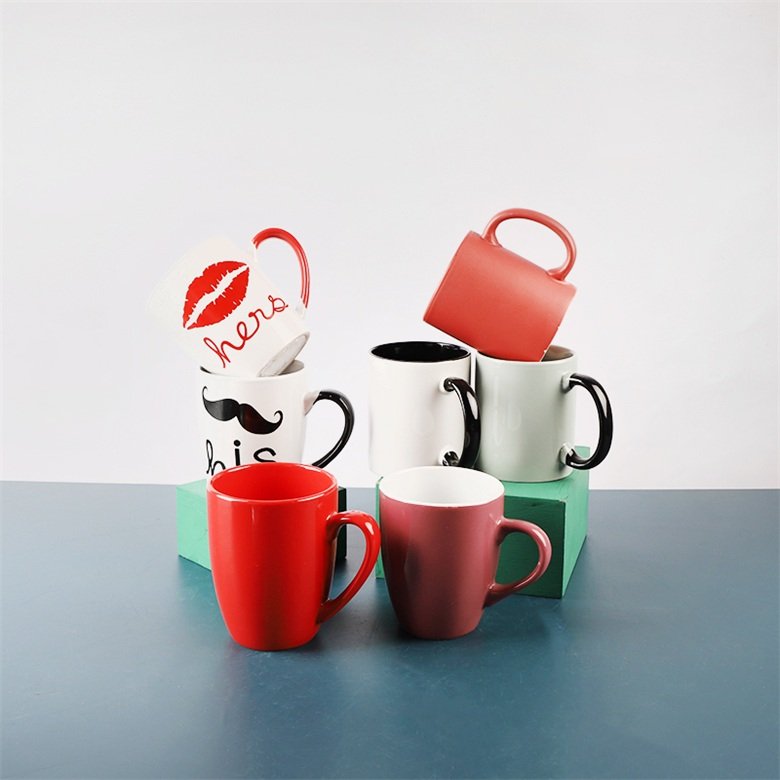
Porcelain is a type of ceramic that is composed of a combination of clay, feldspar, and kaolin. These materials are mixed together to create a fine paste that is used to form the body of the mug. The quality of the raw materials used in the production of porcelain mugs is critical to the final product’s strength and durability. Clay is the primary ingredient in porcelain mugs, and it provides the mug’s shape and structure. The type of clay used can affect the final product’s color, texture, and strength. The most common types of clay used in porcelain mug production are kaolin and ball clay. Kaolin is a fine white clay that is known for its plasticity and strength. Ball clay is a secondary clay that is used to improve the plasticity and workability of the clay mixture.
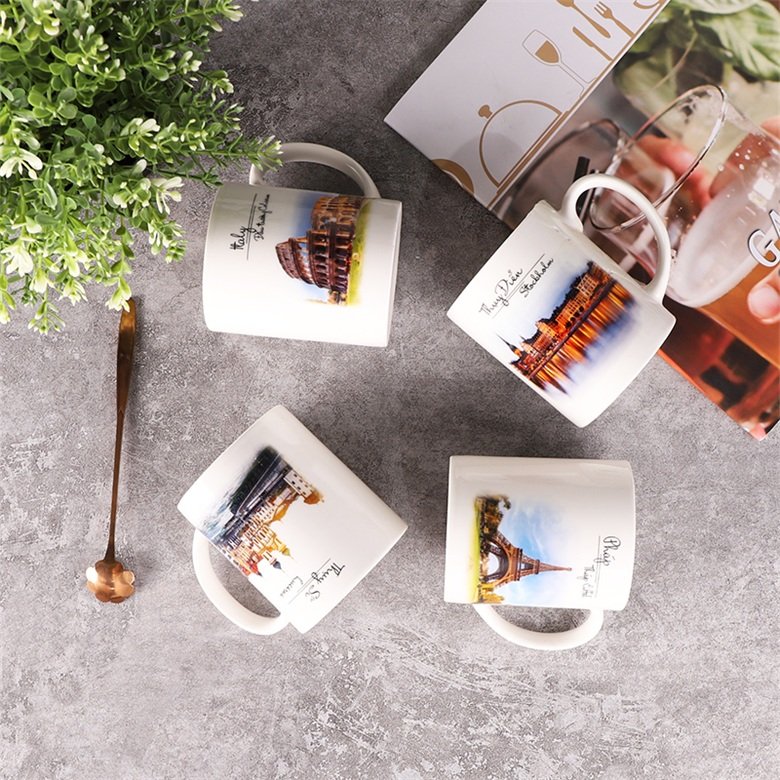
Feldspar is a type of mineral that is used to reduce the firing temperature of the clay mixture. This mineral helps to fuse the clay particles together during the firing process, creating a strong, durable product. The most common types of feldspar used in porcelain mug production are potassium feldspar and sodium feldspar.
Kaolin is a type of clay that is used to create a smooth, white finish on the porcelain mug. This clay is known for its ability to create a fine, smooth surface that is ideal for glazing.
The production process for porcelain mugs involves several steps, including forming, drying, firing, glazing, and decorating.
Forming: The first step in the production process is to form the clay mixture into the shape of a mug. This can be done using a variety of methods, including hand throwing, jiggering, or casting.
Drying: After the mug has been formed, it is left to dry in a cool, dry place. This helps to remove any excess moisture from the clay and prepare it for firing.
Firing: The mug is then fired in a kiln at a high temperature to harden the clay and fuse the particles together. This process can take several hours, and the temperature is carefully monitored to ensure that the mug is fired evenly and thoroughly.
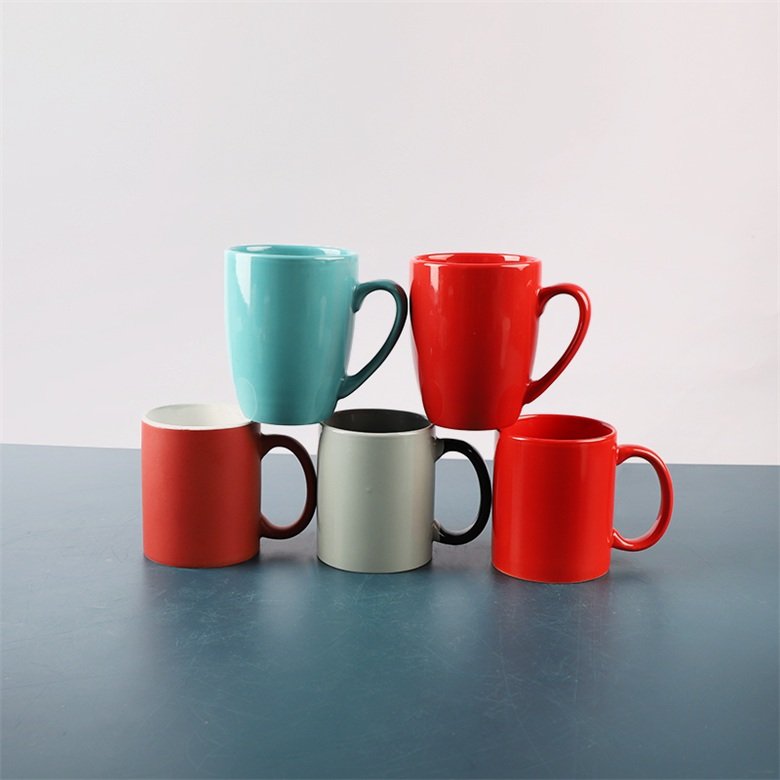
Glazing: Once the mug has been fired, it is ready to be glazed. Glazing is the process of applying a thin layer of glass to the surface of the mug to create a smooth, glossy finish. The glaze can be applied using a variety of methods, including dipping, pouring, or spraying.
Decorating: After the glaze has been applied, the mug is ready to be decorated. This can be done using a variety of techniques, including hand painting, decal application, or stamping. Once the decoration has been applied, the mug is fired again to set the design.
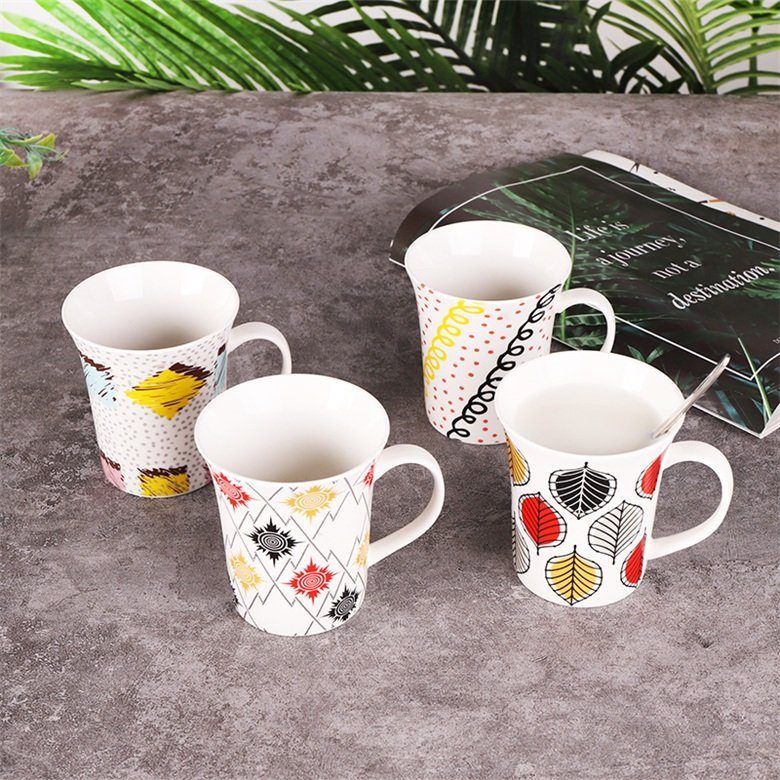
Color glazing and hand-painted flora patterns are two common decoration techniques used in porcelain mug production.
Color glazing involves applying a thin layer of colored glass to the surface of the mug. This creates a smooth, glossy finish that is both attractive and durable. Color glazes can be applied in a variety of colors and patterns, allowing color glaze involves applying a layer of glaze on the ceramic surface, which is then fired in a kiln at high temperatures. This creates a glossy, smooth finish on the mug and the colors become permanent.
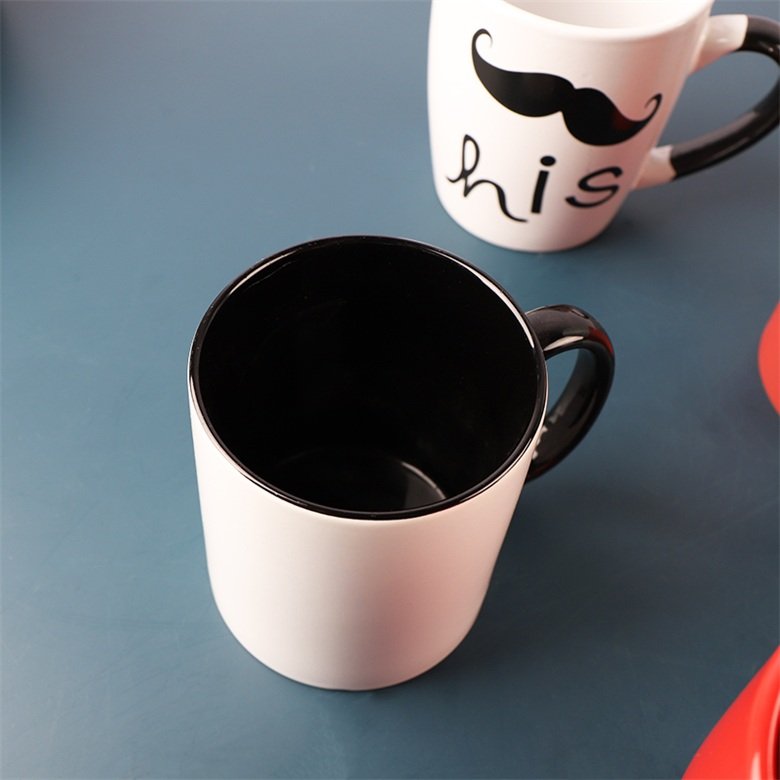
On the other hand, the hand painting flora pattern involves painting the design directly onto the ceramic surface using special ceramic paints. The mug is then fired in a kiln at high temperatures to make the design permanent. Hand-painted flora patterns can give a more intricate and detailed design, but the color glaze is more durable and resistant to wear and tear.

Good-quality ceramic mugs are typically made using high-quality materials and techniques that ensure durability, resistance to chipping and cracking, and good heat retention. The glaze should be even and smooth, and the design should be well-applied without any smudging or rough edges. On the other hand, low-quality ceramic mugs may have uneven glazing, rough surfaces, or poorly applied designs. They may also be more prone to chipping and cracking, and may not retain heat as well as high-quality ceramic mugs.
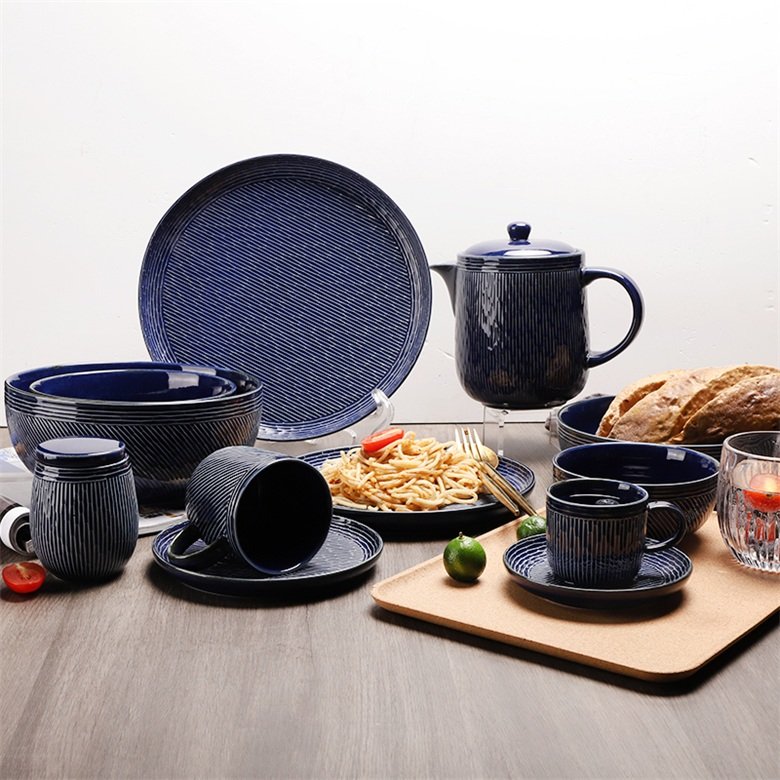
Look for mugs made from high-quality materials such as porcelain or stoneware, and choose a size and shape that is comfortable to hold and drink from. Examine the glaze and design closely to ensure that they are even and well-applied. Finally, consider any additional features such as handles or lids that may enhance the functionality and convenience of the mug for a wide range of.